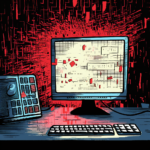 Continuous Integration (CI) is a standard in software development. A lot of companies use it for their development process. It basically means using automation tools to test new code more frequently. Instead of continuous, you can also use the word automated, because CI can’t work manually. Modern build systems comprise scripts and descriptive configurations that invoke components of the toolchain in order to produce executable code. Applications build with different programming languages can invoke a lot of tools with individual configurations. The build system is also a part of the code development process. What does this mean for CI in terms of secure coding?
Continuous Integration (CI) is a standard in software development. A lot of companies use it for their development process. It basically means using automation tools to test new code more frequently. Instead of continuous, you can also use the word automated, because CI can’t work manually. Modern build systems comprise scripts and descriptive configurations that invoke components of the toolchain in order to produce executable code. Applications build with different programming languages can invoke a lot of tools with individual configurations. The build system is also a part of the code development process. What does this mean for CI in terms of secure coding?
First, if you use CI methods in your development cycle, then make sure you understand the build system. When working with external consultants that audit your code, the review must be possible without the CI pipeline. In theory, this is always the case, but I have seen code collections that cannot be built easily, because of the many configuration parameters hidden in hundreds of directories. Some configuration is old and use environment variables to control how the toolchain has to translate the source. Especially cross-platform code is difficult to analyse because of the mixture of tools. Often it is only possible to study the source. This is a problem, because a code review also needs to rebuild the code with changing parameters (for example, changing compiler flags, replacing compilers, adding analyzers, etc.). If the build process doesn’t allow this, then you have a problem. This makes switching to different tools impossible, which is also necessary when you need to test new versions of your programming language or need to migrate old parts of your code to a newer standard.
Furthermore, if your code cannot be built outside your CI pipeline, then reviews are basically impossible. Just reading the source means that a lot of testing cannot be done. Ensure that your build systems do not grow into a complex creation no one wants to touch any more. The rules of secure and clean coding also apply to your CI pipeline. Create individual packages. Divide the build into modules, so that you can assemble the final application from independent building blocks. Also, refactor your build configuration. Make is simpler and remove all workarounds. Once the review gets stuck and auditors have to read your code like the newspaper, it is too late.
